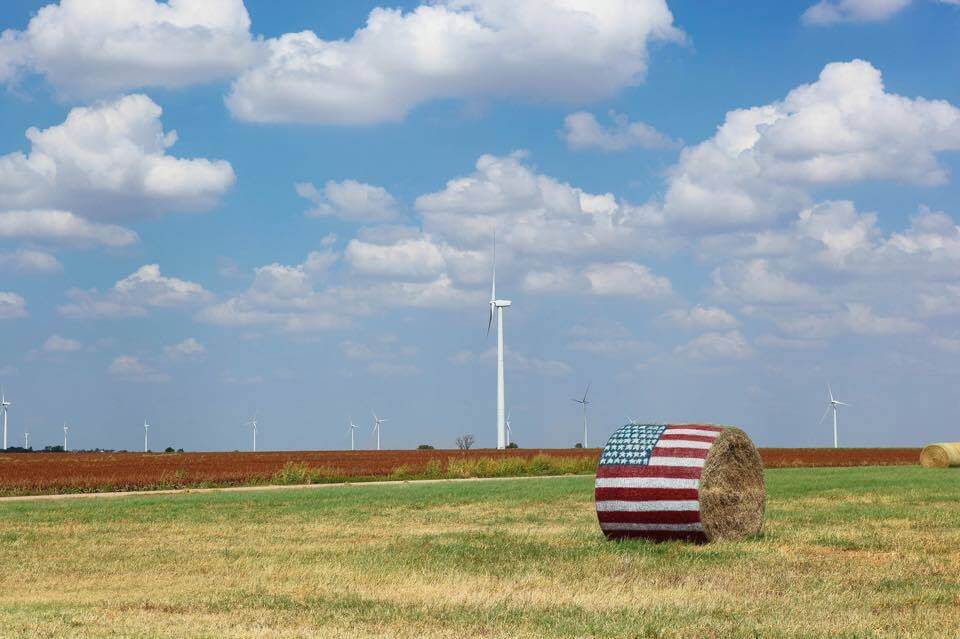Top 10 ways wind energy is a reliable and affordable Clean Power Plan solution
Tom Vinson is Vice President, Federal Regulatory Affairs at the American Wind Energy Association.
With the U.S. Environmental Protection Agency (EPA) publishing the final Clean Power Plan (CPP) in the Federal Register today, along with the accompanying draft federal plan and state model trading plans, it’s a good time to examine the ways wind energy can help make the CPP achievable for states in a cost-effective and reliable manner.
“Reducing carbon pollution by deploying renewable energy will keep electricity affordable and reliable, create jobs, and support local economic development. Renewable energy technologies have become integral and reliable parts of the U.S. electricity supply. Meeting the Clean Power Plan is very doable, and the U.S.-made renewable energy industries are ready to do so affordably,” said Tom Kiernan, CEO of the American Wind Energy Association, in previously commenting about the carbon reduction rule.
Real-world data and recent studies show low-cost wind energy allows states and electric generators to affordably and reliably cut the most carbon. Here are the top 10 ways states can look to wind energy as a “no regrets” solution to meet the EPA’s first-ever carbon pollution limits for existing power plants.
1) The nonpartisan Energy Information Administration (EIA) found that wind energy is consistently one of the lowest-cost options for states to reduce emissions in order to comply with the CPP. Earlier this year, the EIA reported that wind energy accounts for 57% of the economically optimal compliance mix for the CPP. In fact, wind energy played a leading role across a dozen scenarios examined by EIA.
2) As a zero emission resource, wind energy provides more “bang for the buck” for CPP compliance relative to resources with some emissions. For example, because one megawatt-hour (MWh) of gas generation emits nearly half as much CO2 as one MWh of coal generation, nearly twice as many MWh of coal generation must be displaced by gas to achieve the same level of emissions reductions, that zero-emission option like wind would displace. This helps wind energy provide compliance flexibility while reducing the magnitude of change that is required to the existing generation mix, allowing for more cost-effective compliance solutions.
3)Advances in technology and falling prices have allowed wind energy to become such an efficient option for complying with the CPP. Wind’s costs have dropped 66% since 2009, while recent technological developments allow for wind installation in new regions.

4) Growing wind means growing the economy. Wind power currently supports 73,000 well-paying American jobs. It spurs growth in manufacturing, with 500 facilities located in 43 states around the country. Continuing to expand wind power so that it supplies 20% of the U.S. electricity mix by 2030 can create 380,000 well-paying jobs according to the Department of Energy.

5) Wind energy already helps maintain a stable and reliable electricity grid, currently creating enough electricity to power the equivalent of 18 million homes. At times, wind has supplied up to 40% of total demand for electricity on the main Texas power grid and 60% of demand in Colorado.

6) Even more importantly, wind helps keep the power running when conventional generation has challenges. During last year’s polar vortex, wind power reliably generated electricity while traditional fossil fuel power plants failed in the extreme cold. Wind not only helped keep the lights on, it saved Mid-Atlantic and Midwest consumers over $1 billion in just two days as the price of natural gas spiked.
7) Wind power helps keep energy costs steady for consumers over the long-term as well. A recent Department of Energy study found that electric prices are 20% less sensitive to changes in natural gas prices in scenarios with large amounts of wind energy.
8) The EIA’s analysis projected that natural gas prices would increase by over a dollar due to increased demand from the CPP. However, the EIA also found that this price spike would reverse and eventually be eliminated as deployment of renewable energy ramped up and reduced electric sector dependence on natural gas.
9) The goal of the Clean Power Plan is to reduce carbon emissions, and increasing our nation’s share of wind energy does just that. In 2014, wind energy reduced carbon pollution by 126 million metric tons, the equivalent of removing 26 million cars from the road and reducing power sector emissions by more than 5%.
10) Deploying wind energy will reduce other harmful forms of air pollution, including particulate matter and nitrogen oxides. DOE’s Wind Vision projected that producing 35% of America’s electricity from wind energy by 2050 will prevent 21,700 premature deaths.
Learn more about how wind energy can states affordably and reliably comply with the CPP here.




